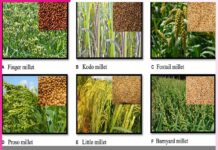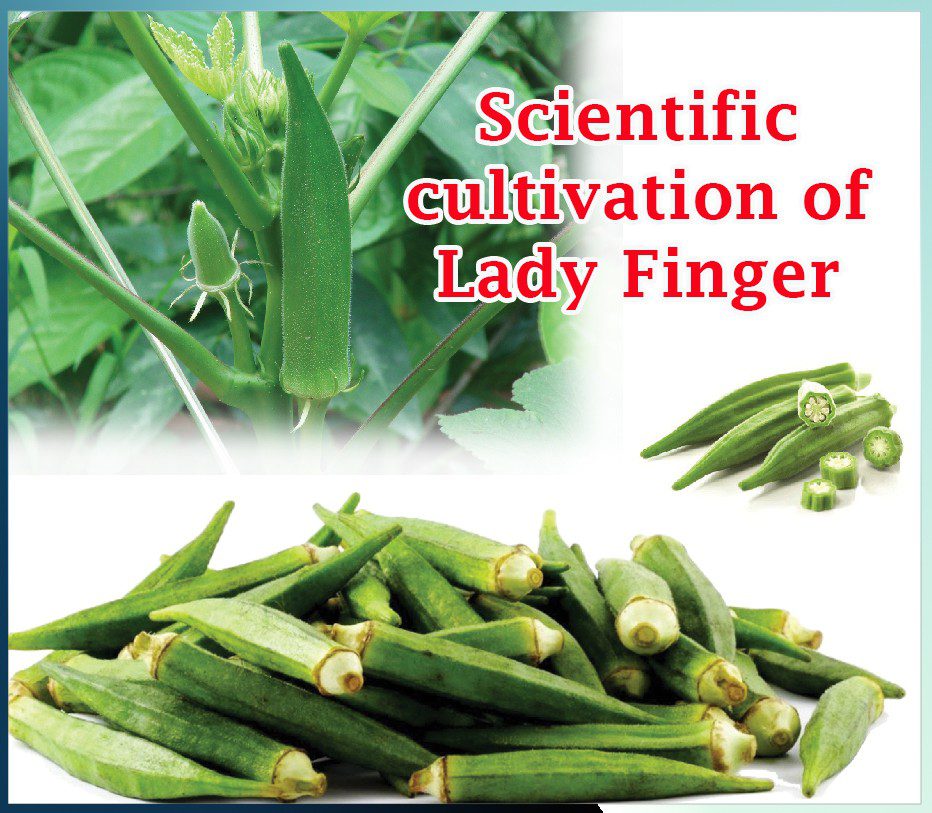Vegetables need more labour to grow but their cultivation using scientific techniques can give good profit. Lady Finger Cultivation can be done in almost all kinds of soil. It has Vitamin A, B, and C in high quantity. Apart from his it is a good source of Proteins and Minerals. Do you know What is the Scientific Name of Lady Finger? It is Abelmoschus esculentus.
Farmers can use the field for Cultivation of Lady Finger, after the harvesting of wheat. This is an important vegetable grown in the summer season. Its cultivation can give good profit. To get yield of high breed ladyfinger the farmers should adopt better and high standards of cultivation.
Apart from home these are in high demand in five star hotels. It can be grown in all kinds of fertile lands but best is Blue Alluvial soil and Alluvial Soil. For this is needed a temperature of 18-30 degree centigrade at the time of seeding. And at the temperature of 42 degrees its production comes out.
Table of Contents
High Breeds for Lady Finger Cultivation
Pusa Makhmali, Parbhani Kranti, Pusa Saavni, Punjab Padmini, Punjab -7, Vaishali Vadhu, Arka Anamika, Arka Abhay, Varsha Uphaar, Hisar Barsati, Azad Bhindi – 1 and 2, Gujarat Bhindi – 1, Hisar Unnat, Saleksh G – 2, Tamilnadu Hybrid – 8, Punjab – 8, II an R – 8, Pusa A – 4, Habhajan and Red Bhindi are good breeds
Seed Rate and Fertilizer Management
12 to 15 kilogram per hectare is its seed rate. Second fortnight of July is best for its cultivation but Ageti crop is started to be placed from the first week of May itself. Line to line distance 45 centimeters and plant to plant different should be kept as 30 cm.
At the time when we make the field ready, we should mix the compost or the spoiled manure of cow dung at the rate of 200-250 per quintal per hectare. The nitrogen at the time of cultivation doesn’t stand complete and hence 80 kilogram of nitrogen in form of nitrogen content, 60 kilogram phosphorus and 40 kilogram potash is needed. This should be added in hal of the quantity of nitrogen on the field, at the time of cultivation. Phosphorus and potash’s full quantity is used during last cultivation at the field.
Lady Finger Cultivation and Insect Control
In rainy season drop water is not needed but in summer crops, application of water is needed when dryness comes after plucking the fruits. Nearly 2-3 nirayi gudayi are needed, but to control the insects vaayselin 1.5 kilogram per hectare, before cultivation.
Disease Control
Yellowven Mozek, which is known as yellow disease is most common with ladyfinger. This disease spreads through virus or infection. Because of this the fruit, leaves and the plant turns pale. To control these one must use infection free reeds or Telthiyan 50 EC medicine’s suitable quantity should be used, to mix in water and sprinkle.
Tana Bedhak and Hal Bedhak are the two kinds of insects that disturb the ladyfinger crop. To prevent from them we should sprinkle ever 10-15th day 25 EC 1.5 liters in 800-1000 litre water, per hectare. But take care that this spray should be done only after taking out the crop.
Production of Lady Finger Crop
The crop placed this time give 80-90 quintal per hectare. In rainy season this shoots up to 150 quintal. The plucking of crop starts in 50-60 days.
How to Make Lady Finger Farming Easy
Farmers can make ladyfinger cultivation easy with the help of diesel ploughs. Before the cultivation of ladyfinger the farm should be used once with diesel plough putting reversible MB plough. Then leave the field empty for two to three days so that the khar-patvar gets dried in the field. Then plough the field and place the plants.
When the ladyfinger starts to grow then remove khar-patvar deposited at the plates of the plant. If needed it is given water three to four times during the crop cycle, with the help of diesel plough water pump. Taking three crop yields in an year these plants are cut with the help of Angad Diesel plough’s ripper and then the field is ploughed with the help of reversible MB plough.
Follow us on Facebook, Twitter, LinkedIn and Instagram, YouTube to get more updates related to Sachi Shiksha – The Famous Spiritual Magazine in India.













































